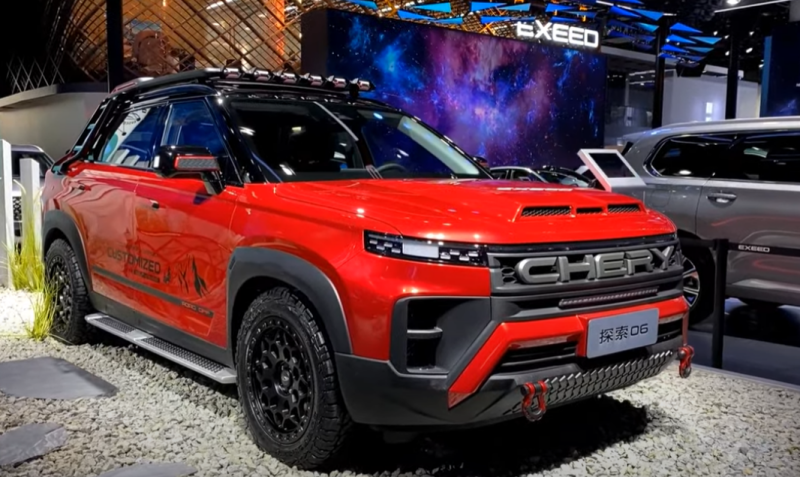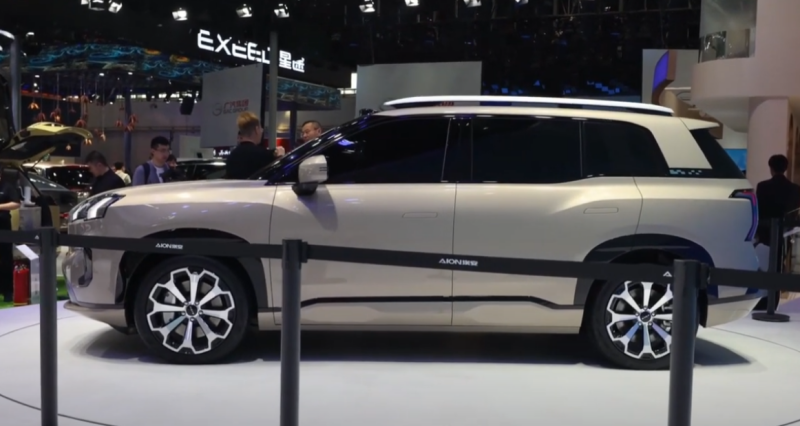"Flying bath" М2-F1
Traditionally, it is considered that lift is created by wings or propellers. But what if instead of them we use the fuselage of an aircraft, giving the structure a special shape? To test the idea in practice, a few decades ago, the Americans developed the NASA M2-F1. The implementation of the project was initiated by time itself: in the 50s, astronautics and rocket science developed rapidly. By the beginning of the 60s, scientists “calculated”: the most optimal shape, for example, for a device descending from orbit, is a cone with a blunt end. This design allows you to pass with the least damage through the dense layers of the atmosphere. This form has become the best for ballistic missiles.
 A cone is the best shape for a rocket. Photo: YouTube.com
A cone is the best shape for a rocket. Photo: YouTube.comIf you think logically further, then the aircraft in the form of a cone should fly. NASA specialists clarified: for a machine of this shape, the upper part should be flat.
The essence of the project
Its working title is M2. We are talking about a manned descent vehicle, which, having left the orbit, could overcome the atmospheric layer over a distance of 5400 km and, if necessary, go to the side by 1400-1450 km. The project was presented by NASA and the US Air Force, which rejected the idea. However, enthusiastic scientists from the US space department continued research at their own peril and risk.
Finished apparatus
They found money for the construction, albeit a little (in its current form, about 240 thousand dollars). Therefore, the apparatus was extremely simple (some planes were borrowed from the Cessna-150). Because of its characteristic shape, it was called the "flying bath", which it really looked like.
 The device is ready for testing! Photo: YouTube.com
The device is ready for testing! Photo: YouTube.comFirst, the prototype was blown in a wind tunnel and satisfactory results were obtained. Then they dragged along the runway on a cable behind a Pontiac Bonneville car at a speed of 190-195 km / h, slightly lifting it into the air. However, to obtain more complete conclusions, the apparatus had to be tested at altitude. The first flight ("bath" glider towed the C-47 aircraft) took place in 1963. NASA M2-F1 was unhooked and glided to the ground with no problem.
 On the rope behind the S-47. Photo: YouTube.com
On the rope behind the S-47. Photo: YouTube.comNASA senior management did not know about the project: when the tests got out, the project could be closed for disciplinary reasons. However, the results and a measly budget forced the agency to change its anger to mercy.
The "flying bath" proved that a device with an appropriate fuselage can fly without wings. At altitude, the car handled well, and the lift was sufficient. As a result, data were obtained, on the basis of which it became possible to create aircraft taking into account the shape of the fuselage, which simplified the design without reducing the lifting force.
McDonell Douglas X-36
The fact that you can fly without wings, it turned out. And what about the tail? It turned out that it is possible to move through the air without it, which was successfully proved by the Kh-36 “tailless” aircraft. It is also interesting in that it not only lacked a keel, but also ... a pilot. The model was controlled from the ground.
 The UAV has no tail. Photo: YouTube.com
The UAV has no tail. Photo: YouTube.comIt was a scaled-down prototype (28%) of an aircraft without a tail, with nozzles that allowed the thrust vector to be changed. The development was carried out in the 90s by Boeing with the participation of NASA, as well as by Phantom Works, a subsidiary of McDonnell Douglas. A completed prototype powered by Williams Research F112s flew in 1997. The absence of a tail was supposed to give such advantages as reducing the weight of the aircraft, reducing drag, increasing the flight range, as well as maneuverability.
 All flights were considered successful. Photo: YouTube.com
All flights were considered successful. Photo: YouTube.comThe tests carried out showed good results: according to some reports, they even exceeded the expected ones. However, at the moment there is no news about the X-36 project: it is closed or work continues is unknown.
Ames AD-1 "Skewer"
The inquisitive human mind goes further: what if the wing is not touched, but somehow changed? Yes, easily! At your service - Ames AD-1, an experimental model with a wing "attached" to the fuselage obliquely. How and who came up with it? And why?
 In flight, the wing rotates to the desired angle. Photo: YouTube.com
In flight, the wing rotates to the desired angle. Photo: YouTube.comBack in the days of World War II in Germany, Richard Vogt was actively working on an aircraft with an asymmetric wing. The main idea was that giving a special shape to the plane would reduce drag. The plane should take off with a conventional wing, and after climbing it should turn. However, the German ideas remained on paper, and the Americans managed to translate them into metal. And here again, not without the participation of NASA. Experts found that a non-standard wing:
✅ reduces drag up to 20%, wave resistance at supersonic - up to 26%
✅ reduces aircraft weight by 14%
Even these advantages were enough to think about building a layout first, and then a working model. It was assumed that changing the position of the wing when making long-haul flights would provide better speed and fuel economy.
Test
After successful flights of the drone, we started building a full-fledged device. Its wing was able to rotate 60 ° relative to the fuselage, which was provided by a special electric motor. To meet the budget, the main power units were supplied with low-power ones.
 Inside, the device was made as simplified as possible. Photo: YouTube.com
Inside, the device was made as simplified as possible. Photo: YouTube.comThe plane took to the skies in 1979. The takeoff took place with the wings perpendicular to the fuselage. Then they turned to the right angle. In total, until 1982, 79 flights were carried out. Test pilots positively evaluated the car. However, having achieved the required results and received the necessary data, the device was sent to the museum. NASA is a research organization, and the companies involved in the construction of aircraft did not dare to take advantage of the idea: one thing is a cheap small model and another is a huge expensive liner.
Project X-48
This is an aircraft designed according to the concept of "flying" or "mixed" wing (BWB). The idea has been tried since the 90s. First, McDonnell Douglas was doing this, then Boeing, which absorbed the company. NASA also joined the work, and later the Pentagon. The "fate of the project" was not easy. Despite some successes, the military refused further funding. As a result, the project has been dragging on for more than 20 years by one Boeing.
 Initially, the X-48 had three engines (one was later removed due to noise). Photo: YouTube.com
Initially, the X-48 had three engines (one was later removed due to noise). Photo: YouTube.comThe latest modification is called X-48C. The main problem of aircraft of this design is poor stability at low speeds and altitudes. The efforts of the experimenters were aimed at eliminating this shortcoming. The result is quite satisfactory.
 X-48 with two engines (initially there were 3) is taking off. Photo: YouTube.com
X-48 with two engines (initially there were 3) is taking off. Photo: YouTube.comThe unmanned X-48C model flies steadily at speeds of less than 200 km/h; it needs a relatively small runway for takeoff and landing. Plus, the device has a modular design and can be adapted for any purpose.
With the result that
What's the matter? As always, in money and willingness to take risks. The military, who refused to finance the project, glance at it from time to time: the Pentagon cannot reach a consensus about the X-48S. However, in June of this year, a message flashed (Aerospace Daily & Defense Report) that the US Air Force had again begun test launches of an experimental drone. This means that things have moved forward and there is a chance to see an interesting car in the air already in full size.










